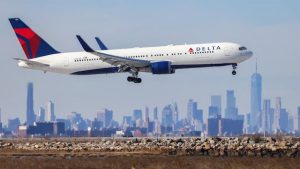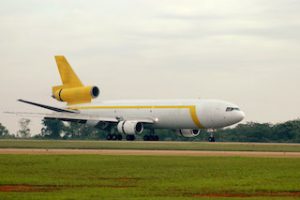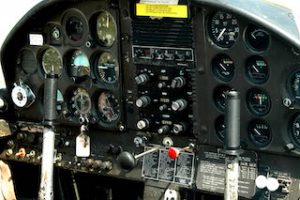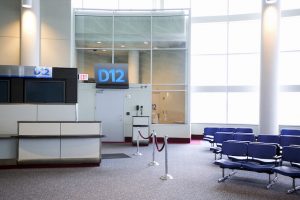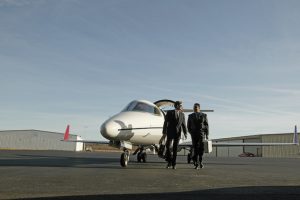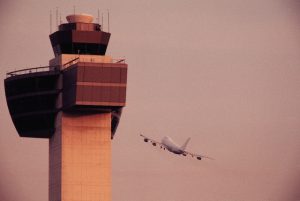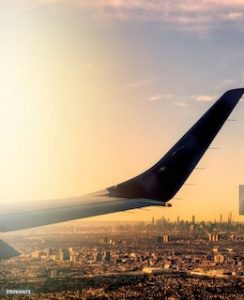The Role Of An IT Technician In The Airline Industry
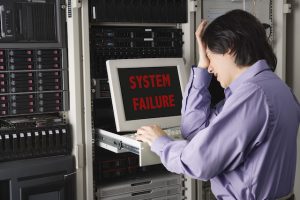 Airline operations depend on reliable systems. Every department needs constant support from technology. IT technicians help these systems run without trouble. From airports to offices, they support every part of the network. Their work ensures communication stays open and secure. Airlines cannot operate without skilled IT technicians behind the scenes.
Airline operations depend on reliable systems. Every department needs constant support from technology. IT technicians help these systems run without trouble. From airports to offices, they support every part of the network. Their work ensures communication stays open and secure. Airlines cannot operate without skilled IT technicians behind the scenes.
An IT technician supports the airline reservation systems
Passengers book flights through digital systems. These systems need to stay available around the clock. IT technician helps maintain the servers. They also manage software updates. Each booking system must connect with others across the airline. So, technicians ensure these platforms are synced and tested. Their work keeps ticketing smooth and fast.
Managing check-in and boarding technology
Check-in counters and boarding gates use smart systems. Technicians install and maintain this technology. This includes kiosks, barcode scanners, and printers. If one device fails, long lines can form. IT technicians respond quickly to reduce delays. Their presence keeps check-in times short. That builds customer trust and reduces complaints.
Supporting aircraft maintenance systems
Aircraft maintenance needs accurate records. IT systems track every part replaced or inspected. IT technicians support these digital maintenance logs. They work with engineers to solve system glitches. This teamwork ensures aircraft remain safe. With every system online, mechanics avoid mistakes. Safety increases because data stays correct.
Handling baggage tracking technology
Lost bags cause passenger frustration. Airlines now use technology to track bags in real time. IT technicians set up scanners and RFID systems. They also handle the backend that stores the data. So, if something fails, they step in fast. Accurate tracking systems protect airline reputation.
Monitoring communication networks
Pilots, crew, and ground staff depend on fast communication. Airlines use digital radios, phones, and secure networks. Technicians monitor these systems from network centers. They watch traffic and respond to alerts. If one system goes down, backup steps in. But the technician must restore the main connection quickly.
Securing airline data systems
Airlines hold passenger names, payment data, and travel records. Hackers target these records often. IT technicians monitor firewalls and antivirus software. They also check for security alerts. If a breach happens, they act fast. Their work helps prevent data loss and financial damage. Airlines trust them to protect sensitive information.
Maintaining software applications
Airlines use many software tools. Each department may use a different platform. IT technicians help install and update the programs. They train staff and help solve bugs. If a system becomes outdated, they suggest upgrades. This reduces future problems. Their advice shapes better tech decisions.
Managing hardware assets
Laptops, desktops, servers, and printers fill airline offices. IT technicians manage these tools. They track inventory and handle repairs. If something breaks, they swap it fast. So, the workflow keeps moving. By staying organized, they reduce waste and save money.
Helping staff with tech problems
Airline staff often face tech issues. A broken email, printer, or login can slow down work. IT technicians respond through support tickets. They visit workstations when needed. Their patience helps staff stay calm. Each fix improves daily work. This builds stronger teams and smoother processes.
Monitoring system performance
IT systems send out performance alerts. Technicians track these alerts from dashboards. They look for signs of trouble. Early signs can stop a major outage. They may also schedule maintenance during quiet hours. This avoids interruptions to daily work. Proactive steps help maintain uptime.
Working with external vendors
Airlines work with many software and hardware vendors. IT technicians talk with these vendors to get support. They report bugs, request replacements, and review updates. This outside help improves system health. Technicians build these vendor relationships over time. It speeds up future repairs and support calls.
Setting up new airline offices
Airlines open new offices or training centers often. Technicians plan and install the tech infrastructure. They handle network cables, routers, and switches. Every computer must connect to the main system. So, their setup has to be perfect. After setup, they test every connection. This avoids slowdowns on launch day.
Maintaining onboard entertainment systems
Passengers enjoy music, movies, and games during flights. Aircraft carry servers to deliver this content. IT technicians maintain the software from the ground. They push updates and repair faults. If a server fails, passengers complain. So, technicians test these systems between flights. Entertainment must always work.
Improving digital workplace tools
Airline staff use calendars, chat tools, and emails daily. These tools run in cloud systems. Technicians ensure smooth logins and file access. They also manage backups and permissions. If someone leaves, they revoke access quickly. This protects the airline from leaks or unauthorised actions.
Training airline employees
Technology changes quickly. Staff need training to stay updated. IT technicians help lead sessions or provide manuals. They explain how to use new tools. This avoids future tech problems. When users feel confident, they make fewer mistakes. That helps the airline serve passengers better.
Managing disaster recovery systems
Flights can stop if systems go offline. Airlines need strong disaster recovery plans. IT technicians test backup servers and storage. They run simulations to check readiness. In a real event, they restore systems fast. This keeps the airline moving. Quick recovery protects revenue and reputation.
Documenting IT procedures
Each fix or change must be recorded. Technicians write detailed steps after solving issues. These documents help others repeat the fix. Clear records support training and audits. They also reduce repeated mistakes. Airlines value this habit. Good documentation saves time in future problems.
Maintaining digital signage systems
Flight schedules display on large screens across terminals. These displays rely on stable connections. Technicians manage the software and hardware. If a screen goes blank, they act fast. Travelers rely on clear signs. So, this task needs close attention.
Upgrading wireless networks
Airlines use Wi-Fi in offices, lounges, and gates. Passengers and staff depend on fast wireless speeds. IT technicians upgrade routers and optimize signals. They test every access point. If performance drops, they fix it. Fast internet builds customer loyalty.
Handling IT needs of airport lounges
Business class lounges offer high-speed internet and private workstations. These areas need extra tech attention. Technicians maintain secure access points. They also support printing, screen displays, and customer kiosks. This improves the travel experience. Passengers notice when things work well.
Working across multiple time zones
Airlines operate globally. IT teams often support staff in different countries. Technicians rotate shifts or work remote. They manage language settings, time zone settings, and compliance. This global reach keeps the airline unified. Without this, systems would become fragmented.
Tracking IT metrics
Airlines use data to improve performance. Technicians gather system uptime, ticket resolution speed, and software usage. They prepare reports for managers. These numbers show where support can improve. Smart tracking leads to smart planning. Airlines then invest in the right upgrades.
Assisting with mobile device management
Flight staff use tablets and phones daily. These devices need updates, apps, and security patches. IT technicians handle this remotely. They push updates at night or during breaks. A single glitch can delay a flight. So, device health matters.
Handling emergency IT issues
When a system breaks mid-operation, quick help is needed. Technicians keep a hotline or chat open. They respond instantly. Every minute saved can prevent major delays. Fast thinking and steady hands matter here. This fast support earns trust.
Adapting to new airline technologies
New apps and systems arrive often. IT technicians stay updated through learning. They test new tools before launch. Feedback helps improve usability. This prepares airlines to meet tech demands. Staying updated helps everyone succeed.
Building team trust
IT technicians interact with staff daily. Friendly support builds trust. That trust helps during emergencies. A familiar face calms tension. Teams work better when support feels helpful. Good people skills matter here.
Following industry compliance standards
Airlines follow global tech rules. IT technicians study and follow these guidelines. They check systems for compliance. Regular audits test their setups. Passing audits shows strong tech control. This also avoids legal problems.
Planning for peak travel seasons
Holiday travel increases system usage. IT technicians prepare systems in advance. They test loads and schedule upgrades early. During travel peaks, they stay alert. Fast response protects revenue. This planning supports smooth holiday operations.
Tracking user requests
Every support request adds to a log. Technicians track these trends. Some problems repeat often. Others link to updates or new apps. By spotting trends, they suggest long-term fixes. This improves service across the board.
Helping during airport expansions
When airports expand, IT systems must grow too. Technicians plan the network layout. They coordinate with builders and engineers. Every new gate needs strong connections. So, their work supports the project from start to end.
Testing airline software
Airlines use custom software for pilots, crew, and baggage teams. Technicians help test these tools. They look for bugs or crashes. Early testing reduces surprises. Pilots and crew can then rely on smooth apps.
Trusted backbone
Airline success depends on teamwork. IT technicians form a silent backbone. Their work touches every digital tool. Although they often work behind the scenes, their impact reaches every corner. From planes to terminals, their skill moves the airline forward. They solve problems, improve systems, and power connections every day.
